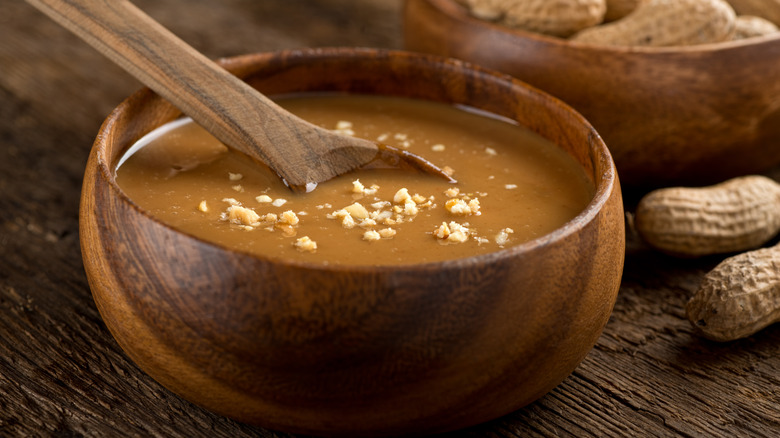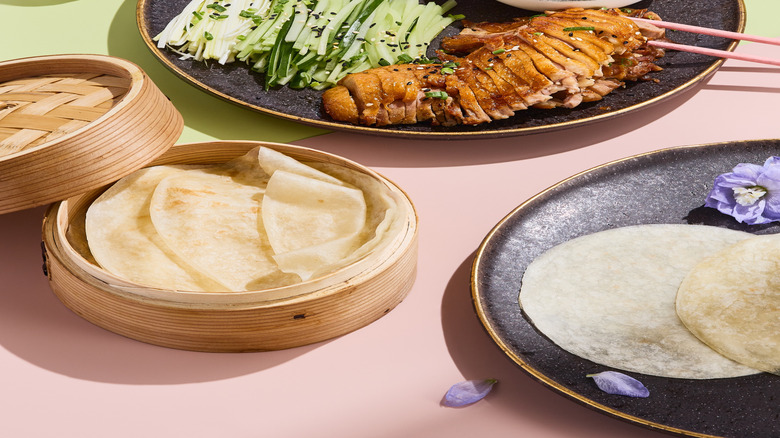Make A Simple Peanut Sauce To Drizzle On Your Thai Dinner With Just 3 Ingredients
Just as tamarind is the key ingredient in the quintessential Pad Thai, peanuts, crumbled as a topping or blended into peanut sauce, are the crowning touch to many Thai dishes. While traditionally a sauce served with grilled meat skewers or satay (hence the name satay sauce), this creamy, tangy, sweet, and salty condiment tastes equally good as a salad dressing, dipping sauce, or wrap and sandwich condiment. Since you only need three ingredients, you're more likely to have everything you need to make this simple peanut sauce at home. The secret of the short ingredient list lies in the fact that each one has a complex flavor, thus blending into a result that is greater than the sum of its parts.
While pure peanut butter is usually a good option for peanut sauce, here, the commercial kind is preferable since it already has a balanced sweet-salty taste. Similarly, hoisin sauce, the punchiest of the three ingredients, brings in all the complexity and flavors that would otherwise require soy sauce, ginger, garlic, and other aromatics — leading to a significantly more elaborate peanut sauce recipe. Finally, rice vinegar adds tanginess that's perfect for Asian dishes. The resulting sauce is thick and doesn't lose too much flavor even if you thin it with a little water. However, you can also use vegetable or chicken stock to adjust the consistency and add more flavor.
Hoisin sauce is the flavor powerhouse in 3-ingredient peanut sauce
Though you won't see hoisin sauce amongst the condiments on your table, you'll taste it in many of your favorite dishes at a Thai or Chinese restaurant. From marinades and glazes to stir fries, the sweet, spicy, umami-heavy sauce is a fixture in most Asian kitchens. Hoisin sauce's long ingredient list includes soy sauce, fermented soybean paste, ginger, sesame oil, spices, and more. Peanut sauce benefits from all these flavors, which makes hoisin sauce perfect for paring down that peanut sauce ingredient list. However, this also makes hoisin sauce difficult to substitute. You could use soy sauce instead, but the resulting peanut dip would be lacking in complexity and texture, which you could make up by adding some chili paste (or sriracha), sesame oil, and fresh garlic.
When picking the star ingredient of peanut sauce, choose a good commercial or natural peanut butter. If you're trying to use up an old jar you've had lying around, don't make the peanut butter mistake of forgetting to check the label or not stirring it well before using. Both smooth and chunky can be used, but for a more authentic peanut sauce, use smooth peanut butter and top it with crushed peanuts before serving.
Finally, rice vinegar is the most flexible ingredient, and you can substitute it with white wine vinegar or apple cider vinegar. In a pinch, a blend of lime juice and sriracha can also be used to add a similar sharp tanginess. Fewer ingredients make it easy to modify the flavor and thickness of the sauce. Pair it with satay-style tofu skewers and Vietnamese shrimp summer rolls, or thin it out to dress cold noodles and salads.

